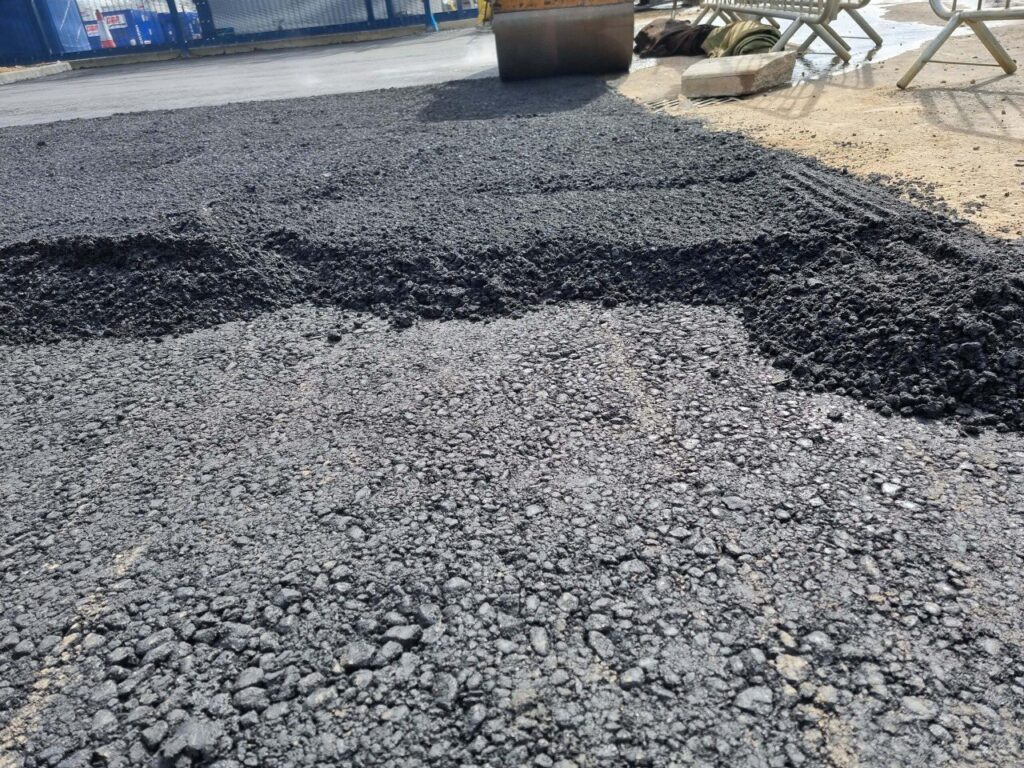Tarmac Roadways in Extreme Weather Conditions: How They Hold Up
Introduction: Tarmac, or asphalt, roadways are a vital component of our transportation infrastructure, serving as the arteries that connect communities and enable economic activities. However, these roadways often face extreme weather conditions that challenge their durability and performance. This blog post will explore how tarmac roadways hold up in extreme weather conditions and the measures taken to ensure their resilience.
1. Extreme Heat
Challenge: High temperatures can soften asphalt and lead to rutting or deformation, especially in regions with prolonged heatwaves.
Solution: To combat the effects of extreme heat, many road construction projects use specialised asphalt mixes designed to withstand higher temperatures. These mixes incorporate polymer additives and modified binders that enhance the tarmac’s resistance to softening. Proper compaction during construction is also essential to create a more robust road surface.
2. Freezing Temperatures
Challenge: In cold climates, freeze-thaw cycles can cause cracks and damage to tarmac roadways as water infiltrates cracks, freezes, and expands.
Solution: Cold-mix asphalt is a common choice in regions with freezing temperatures. It remains pliable at lower temperatures, reducing the risk of cracking. In areas with frequent extreme colds, snowploughs and de-icing materials are used to keep roads safe.
3. Heavy Rain and Flooding
Challenge: Excessive rainfall can lead to water damage, erosion, and potholes on tarmac roadways.
Solution: Proper drainage design is crucial to manage heavy rain and prevent water from pooling on the road surface. Porous asphalt, which allows water to infiltrate the surface and reduce runoff, is another innovative solution. Routine maintenance, including filling potholes and sealing cracks, helps extend the life of tarmac roadways.
4. High Winds and Storms
Challenge: Strong winds and storms can blow debris onto roads, cause trees to fall, and damage road signs and infrastructure.
Solution: Road authorities monitor weather conditions and implement safety measures during storms. These measures include clearing debris, securing road signs, and promptly repairing damage. Well-maintained vegetation along roadsides can also mitigate the risk of fallen trees.
5. Extreme Cold and Snow
Challenge: Regions with severe winters often face challenges related to snow accumulation and ice formation on tarmac roadways.
Solution: Snow removal equipment, including ploughs and salt spreaders, keeps roads clear and safe during winter. Anti-icing materials, such as brine solutions, are applied to prevent ice formation. In some cases, heated pavement systems are installed to melt snow and ice.
Conclusion: Tarmac roadways are designed and constructed to withstand a wide range of extreme weather conditions. Innovative asphalt mixes, proper construction techniques, and regular maintenance are crucial in ensuring these roadways’ resilience and longevity. While they may face challenges in extreme weather, tarmac roadways remain a dependable and critical part of our transportation infrastructure.
Call us on: 01843 265 695
Click here to find out more about Ramsgate Driveways
Click here to complete our contact form and see how we can help with your driveways needs.

